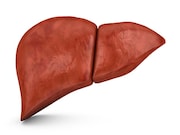Frailty assessment may help identify patients at higher risk for death on the wait-list
THURSDAY, Sept. 19, 2019 (HealthDay News) — A frailty assessment as part of liver transplant evaluation may help identify transplant candidates at higher risk for death, according to a study published online Sept. 11 in JAMA Surgery.
Christine E. Haugen, M.D., Ph.D., from Johns Hopkins University School of Medicine in Baltimore, and colleagues used data from 1,108 liver transplant candidates at nine U.S. transplant centers (March 1, 2012, to May 1, 2018; mean age, 55 years) to evaluate differences in the association between liver transplant wait-list mortality and frailty by body mass index (BMI). The Liver Frailty Index score was calculated based on grip strength, chair stands, and balance, with frailty defined as a Liver Frailty Index score of ≥4.5.
The researchers found that 26.2 percent of the candidates were frail, including 25.4 percent of the 670 nonobese candidates, 26 percent of 246 candidates with class 1 obesity, and 29.2 percent of the 192 candidates with at least class 2 obesity (P = 0.57). There was a higher risk for wait-list mortality among frail nonobese candidates and frail candidates with class 1 obesity versus their nonfrail counterparts (nonobese candidates: adjusted subhazard ratio [sHR], 1.54; 95 percent confidence interval [CI], 1.02 to 2.33; P = 0.04; candidates with class 1 obesity: adjusted sHR, 1.72; 95 percent CI, 0.99 to 2.99; P = 0.06; P = 0.75 for interaction). There was a 3.19-fold higher adjusted risk for wait-list mortality among frail candidates with at least class 2 obesity versus nonfrail candidates with at least class 2 obesity (95 percent CI, 1.75 to 5.82; P < 0.001; P = 0.047 for interaction).
“Frailty assessments may help to identify vulnerable patients, particularly those with a BMI of 35.0 or more, in whom a clinician’s visual evaluation may be less reliable to assess muscle mass and nutritional status,” the authors write.
Several authors disclosed financial ties to the pharmaceutical industry.
Copyright © 2019 HealthDay. All rights reserved.








